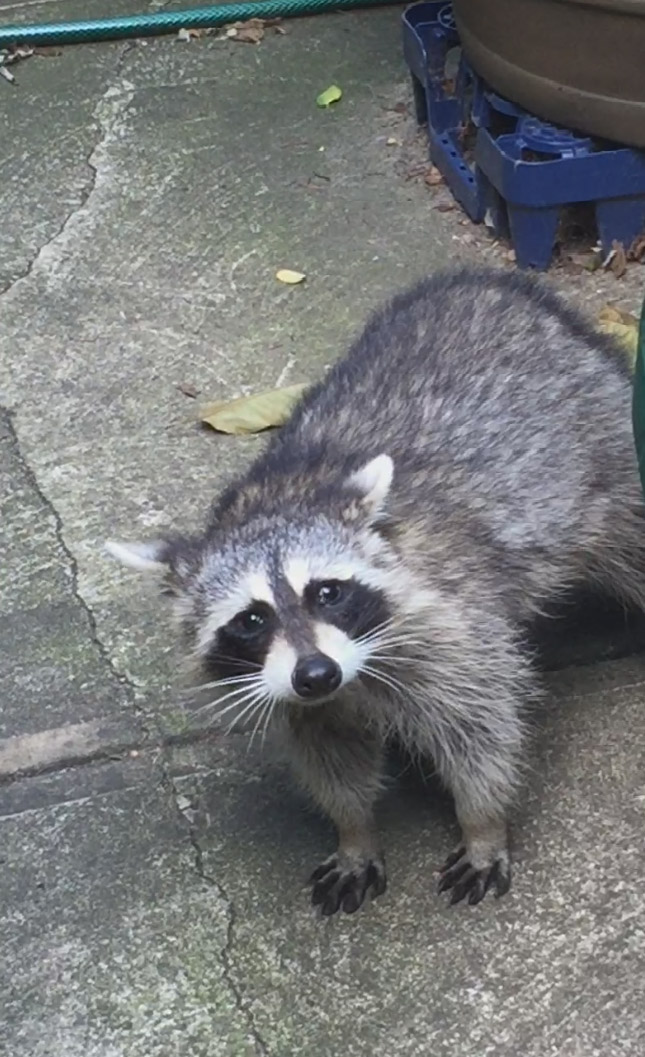Community News
Raccoons Gentrify the Stuy

By Joanna Goodwin
First the city was plagued by rats, and then came the bedbugs, the mosquitoes, now the raccoons. Again! Raccoons are often thought of as forest-dwelling creatures, but they can reach a very high population in cities. Last year, at least two raccoon families moved onto my block in Bed-Stuy.
On September 8th, my son was anxiously getting ready for his first day of second grade when he saw a raccoon outside our bathroom window. I called Animal Care Centers of NY, formerly Animal Care & Control. The representative told me that they would only trap the raccoons if they were sick or dying. She said they are urban raccoons and this is their natural habitat. I learned that “urban raccoons” have adapted to city life and its normal for them to forage for food during the day.
On Saturday morning while collecting my laundry off the line, I noticed again, one of the raccoons sleeping on the top of a tree in my yard. I made a garlic solution as a deterrent and sprayed it around the yard. The raccoon seemed turned off by the smell and made a quick exit. I noticed it eating cat food in my neighbor’s yard (in photo). I went to warn my neighbor of the uninvited guest in their yard. My neighbors already had traps in place to (humanely) capture them over the weekend.
For all you cat-loving neighbors, your outdoor cat’s food is just downright irresistible to these omnivorous scavengers. If you feed your kitty outside and it attracts raccoons, they’ll keep coming back for more tasty treats. Feeding the animals also causes them to lose their fear of people. This could result with raccoons entering a home through an open door or even biting people or pets. Remember the lady attacked by raccoons in Central Park and the raccoon burglars in Park Slope.
Back in 2014, according to the U.S. Department of Agriculture, they set up feeding chutes full of the medicinal morsels of the rabies vaccine in Brooklyn’s waterfront from Canarsie to Coney Island, and Prospect Park. So that means the other areas of Brooklyn can only seek help from a professional. I called a few pest control companies. For $100 to $300 per trap—professionals will check traps daily and make unlimited raccoon runs. Most said they released raccoons at least five miles from where they were caught, but in keeping with state law, not across county lines — meaning that most raccoons caught in Brooklyn stay in Brooklyn.
Here are the top 5 signs of a rabid raccoon:
- Difficulty walking – fully or partially paralyzed hind legs, or walking in circles.
- Looks confused, disoriented, slow. A healthy raccoon will be doing something purposeful, and it’ll look alert.
- Makes crazy noises – most healthy raccoons chatter to each other or make a real racket when fighting or mating, but usually when they’re foraging about they aren’t making crazy noises
- Foaming at the mouth – if you’re close enough to see this, get away!
- Just plain looks sick – shouldn’t be too hard to tell. Raccoons can contract a variety of diseases, including distemper (raccoons are susceptible to infection by both canine and feline distemper), but in no cases should you risk contact with a raccoon.

